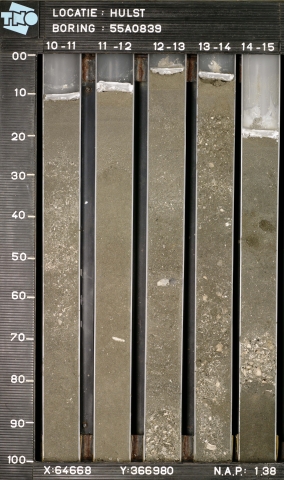Greyish to blackish green very fine to medium sand, silty, (very) glauconitic, calcareous, and locally micaceous or organic. Clay, very sandy to moderately silty. Intercalated sand and clay with goethite and phosphorite concretions. Dominance of foresets and bottom sets.
Warm shallow marine, delta front, coastal (slightly glauconitic sand or bleached quartz sand) and continental (sand with intercalated lignite) near the unit’s margins.
Base may consist of clay with glauconite enrichment. Gradual, unconformable transition into less glauconitic shallow-marine and coastal sand and clay (Veldhoven Formation). Sharp, unconformable contact with marine clay (Boom Member, Rupel Formation or even older units).
Generally gradual transition into less glauconitic, commonly shell-rich near-coastal marine sand and clay (Oosterhout Formation); sharp in case of shelly crags. In the southeastern Netherlands, sharp and erosive contacts with partly intercalated coarser terrestrial sand deposited near the coastline (Ville, Inden and Kieseloolite formations and German Köln Formation).
